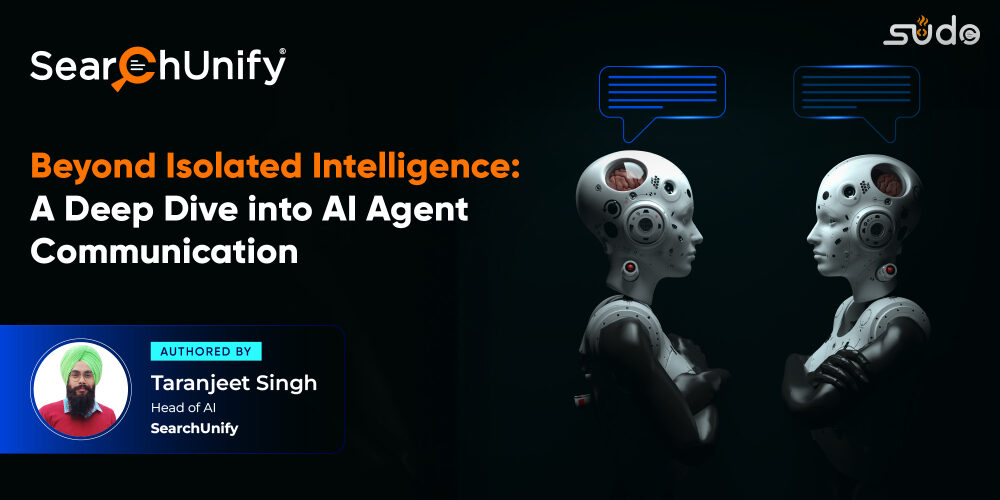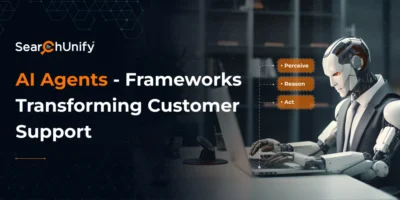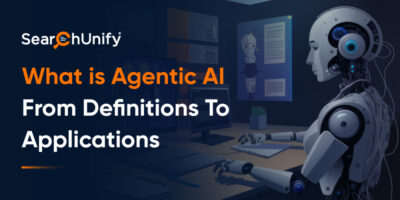
The true power of Agentic AI is unlocked when multiple AI agents are seamlessly integrated, creating a cascading effect. When these agents work together, the scale of automation and capabilities is significantly enhanced.
Consider a scenario where a human agent is solving a case using an Agentic AI platform, but the AI agents within the platform do not communicate with each other. In this case, the human agent must act as an intermediary—taking the information from the case summarization agent and manually passing it to the solution generation agent to create a resolution. However, if the AI agents were able to communicate directly, the case summarization agent could relay the necessary details to the solution generation agent, which would then deliver the final solution directly to the human agent—eliminating unnecessary steps and improving efficiency.
This article explores the critical communication mechanisms and strategies that enable AI agents to interact effectively with external systems, driving automation, enhancing decision-making, and creating superior customer experiences. As IT ecosystems become increasingly complex, achieving seamless interoperability is essential for maintaining a competitive edge.
1. Communication Mechanisms: A Spectrum of Approaches
AI agents employ a range of communication methods, each tailored to specific needs:
- APIs (Application Programming Interfaces): APIs serve as the fundamental building blocks of integration, enabling standardized data exchange and function calls between disparate systems. This interoperability allows AI agents to retrieve, manipulate, and update data across various applications, minimizing integration costs and development time.
- Agent Communication Languages (ACLs): ACLs, such as FIPA-ACL and KQML, provide a structured framework for agent-to-agent communication. These formal languages utilize standardized syntax, semantics, and pragmatics to ensure clear, unambiguous communication, facilitating complex coordination, negotiation, and collaboration among autonomous agents.
- Direct Messaging & Broadcasting: Direct messaging enables secure, point-to-point communication for sensitive data exchange, while broadcasting facilitates efficient dissemination of information across an agent network. These targeted approaches optimize communication flow and minimize network overhead.
2. Advanced Communication Strategies: Enabling Complex Interactions
Beyond basic message passing, advanced strategies empower AI agents to engage in more sophisticated interactions:
- Multi-Party Dialogue Games: These structured interaction frameworks facilitate complex negotiations and collaborations among multiple agents, enabling distributed problem-solving and decision-making.
- Event-Triggered Actions: By dynamically responding to real-time events and data streams, AI agents adapt to changing circumstances and proactively address emerging needs.
- Natural Language Processing (NLP): NLP bridges the gap between human and machine communication, enabling users to interact with AI agents through natural language commands and queries, enhancing usability and accessibility.
3. APIs: The Foundation of Seamless Integration
APIs play a pivotal role in connecting AI agents with external systems, offering several key advantages:
- Data Access: Real-time data retrieval from diverse sources empowers AI agents with up-to-the-minute information, crucial for making informed decisions and providing timely responses.
- Model Deployment: APIs facilitate the integration of AI models into live environments, enabling continuous learning, adaptation, and optimization based on real-world data.
- Service Integration: Connecting disparate services, such as ticketing systems, customer databases, and knowledge bases, streamlines workflows and enhances automation.
The benefits of API-driven integration are significant:
- Increased Efficiency: Minimized manual intervention accelerates processes and reduces operational costs.
- Enhanced User Experiences: Contextually relevant responses, powered by real-time data, create personalized and satisfying interactions.
- Improved Agility: Dynamic adaptation to changing business needs and environmental conditions ensures responsiveness and resilience.
4. Agent Communication Languages (ACLs): Fostering Intelligent Collaboration
ACLs provide the structured communication framework necessary for effective multi-agent collaboration. Key components of ACLs include:
- Standardized Syntax: Formal message structures ensure clarity and minimize ambiguity in agent communication.
- Well-Defined Semantics: Shared meaning and consistent interpretation of messages enable agents to understand and act upon information reliably.
- Contextual Pragmatics: Rules governing message usage ensure appropriate and effective communication within specific situations and interactions.
These features enable a broad range of use cases, including complex customer support automation scenarios where agents handle multi-channel inquiries, personalized engagements, and proactive problem-solving.
5. Direct Messaging and Broadcasting: Balancing Precision and Scale
- Direct Messaging: Secure and targeted communication minimizes network overhead and protects sensitive information, facilitating real-time collaboration and feedback between agents and human users.
- Broadcasting: Efficient dissemination of information to multiple agents simultaneously ensures system-wide consistency and enables rapid response to critical events or updates.
Navigating the Complexities of AI Agent Communication
Building robust AI agent communication systems requires addressing several challenges:
- Legacy System Integration: Connecting AI agents with older systems can require significant effort and careful consideration of compatibility issues.
- Bias Mitigation: Ensuring fairness and avoiding unintended consequences requires addressing potential biases in training data and algorithms.
- Managing Complexity: As the number and diversity of agents within an ecosystem grow, effective communication and coordination become increasingly complex, demanding robust management and monitoring tools.
The SearchUnify Advantage
SearchUnify simplifies integrations through robust API and ACL frameworks, offering scalable solutions tailored to enterprise needs.
- Plug-and-Play Integration Framework
Pre-built connectors for platforms like Salesforce, ServiceNow, and Zendesk streamline integrations, while custom options cater to niche systems. This flexibility allows organizations to quickly deploy and adapt AI solutions without extensive development time. - Single Configuration Point
A centralized setup manages all integrations and monitors communication flows, ensuring efficiency and reducing the likelihood of configuration errors. - Low-Code/No-Code Approach
This approach empowers non-technical users to configure integrations, reducing the need for extensive IT support. By enabling business users to customize and manage integrations, organizations can respond faster to changing needs and opportunities.
Conclusion
Effective communication is the cornerstone of successful Agentic AI deployments. By understanding the nuances of APIs, ACLs, direct messaging, broadcasting, and the associated challenges, organizations can harness the transformative potential of AI agents to achieve unprecedented levels of automation, efficiency, and customer satisfaction. Exploring these communication strategies is essential for any business seeking to unlock the full power of AI in the modern enterprise landscape.










